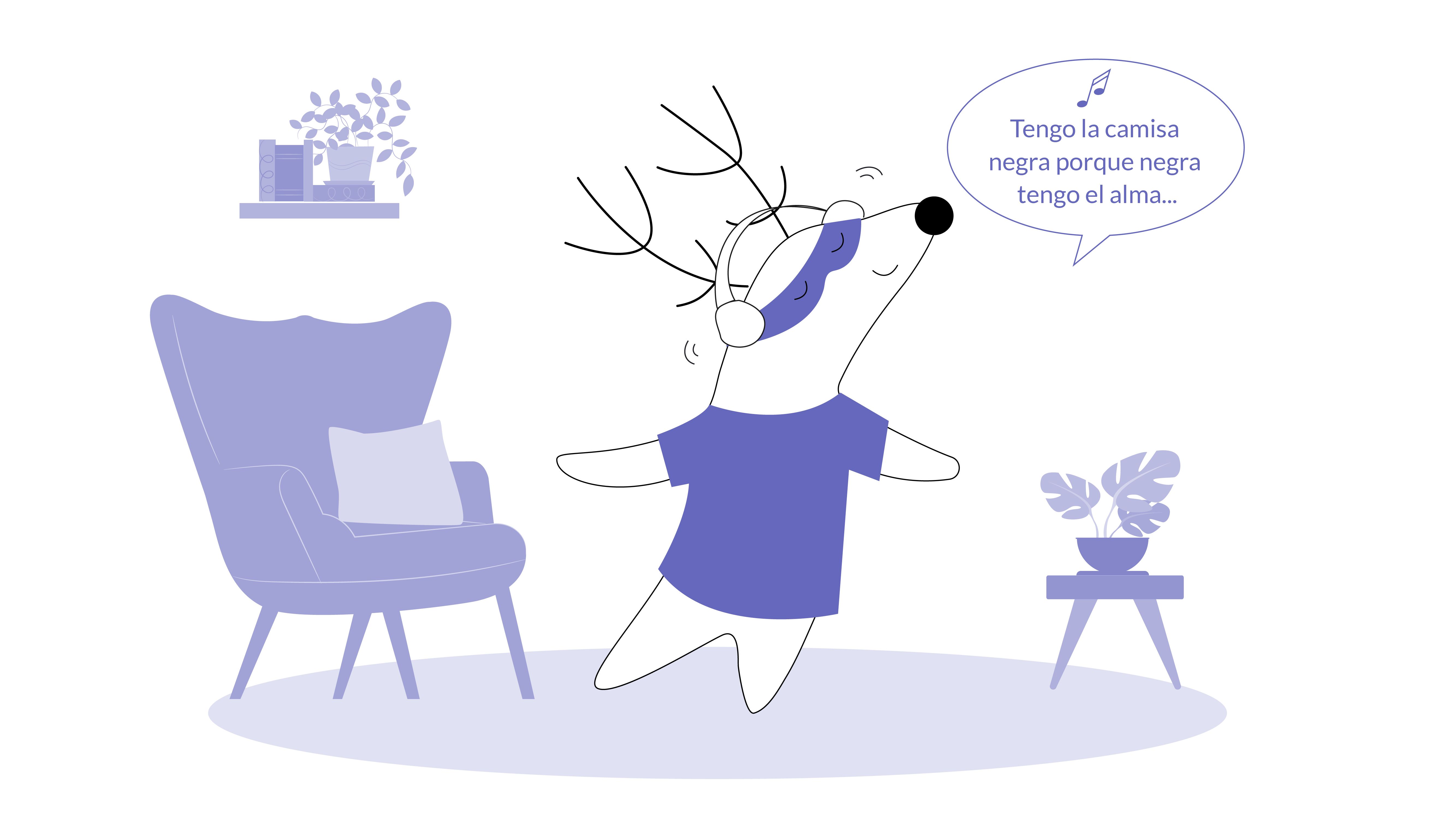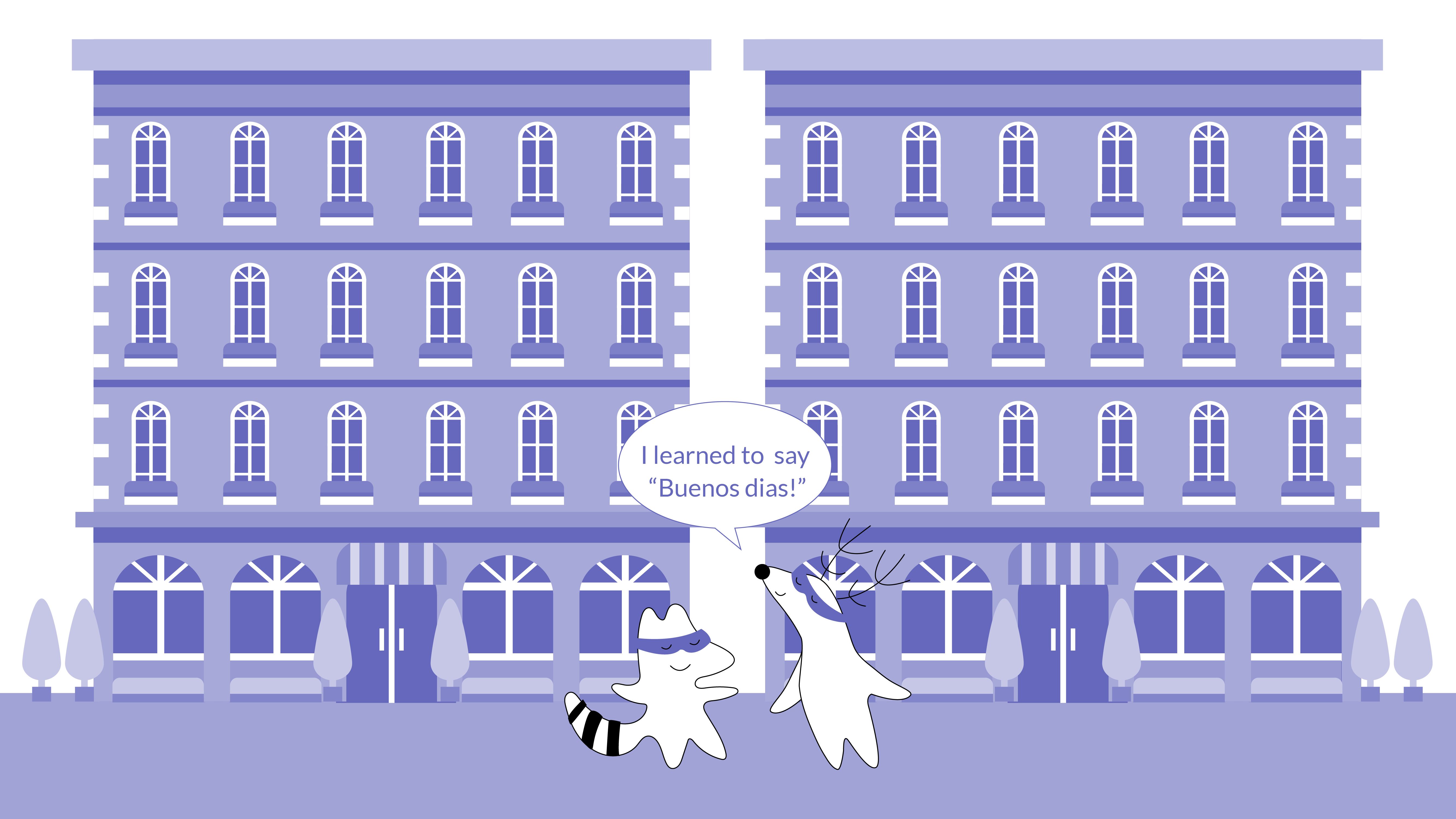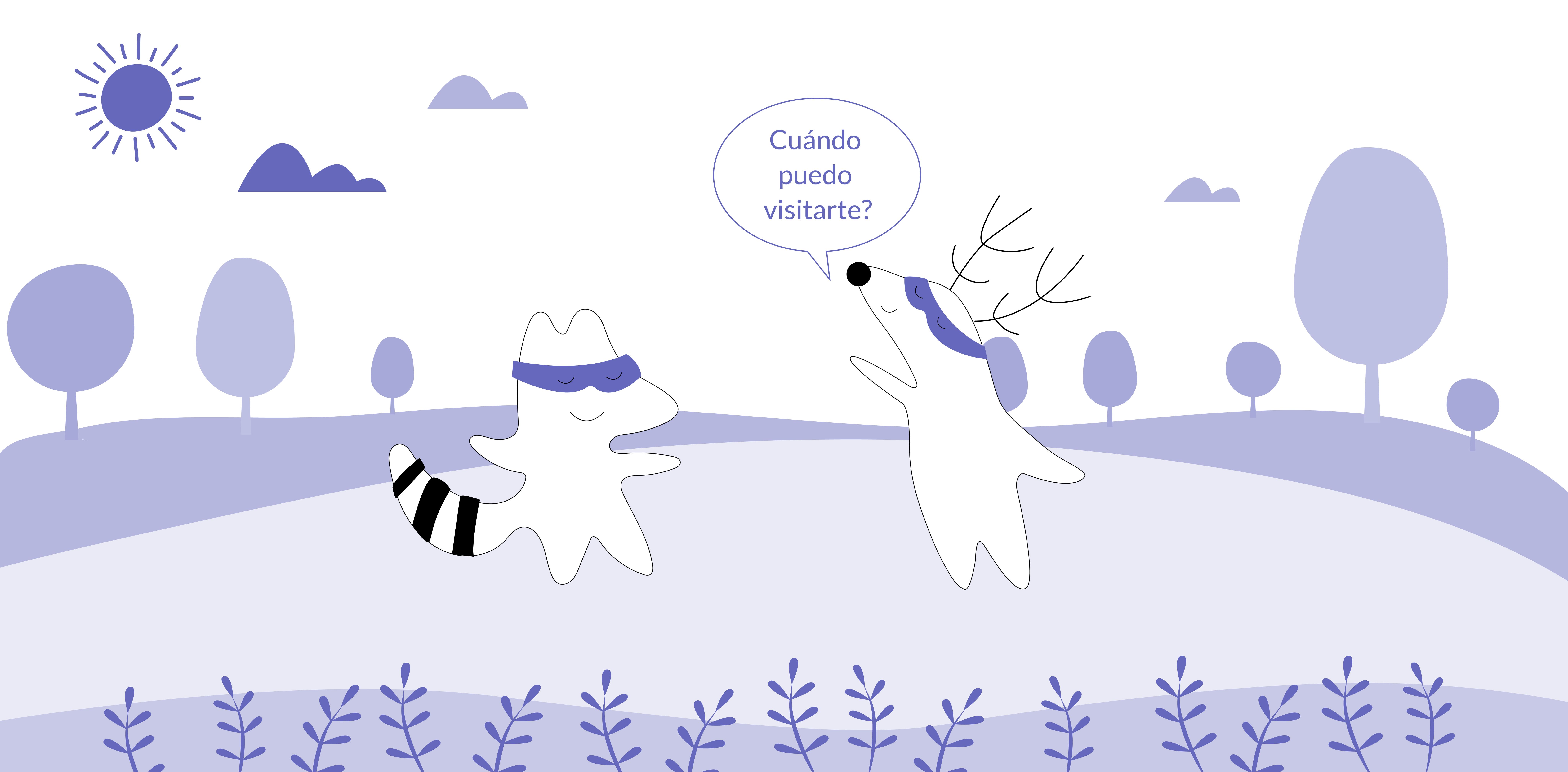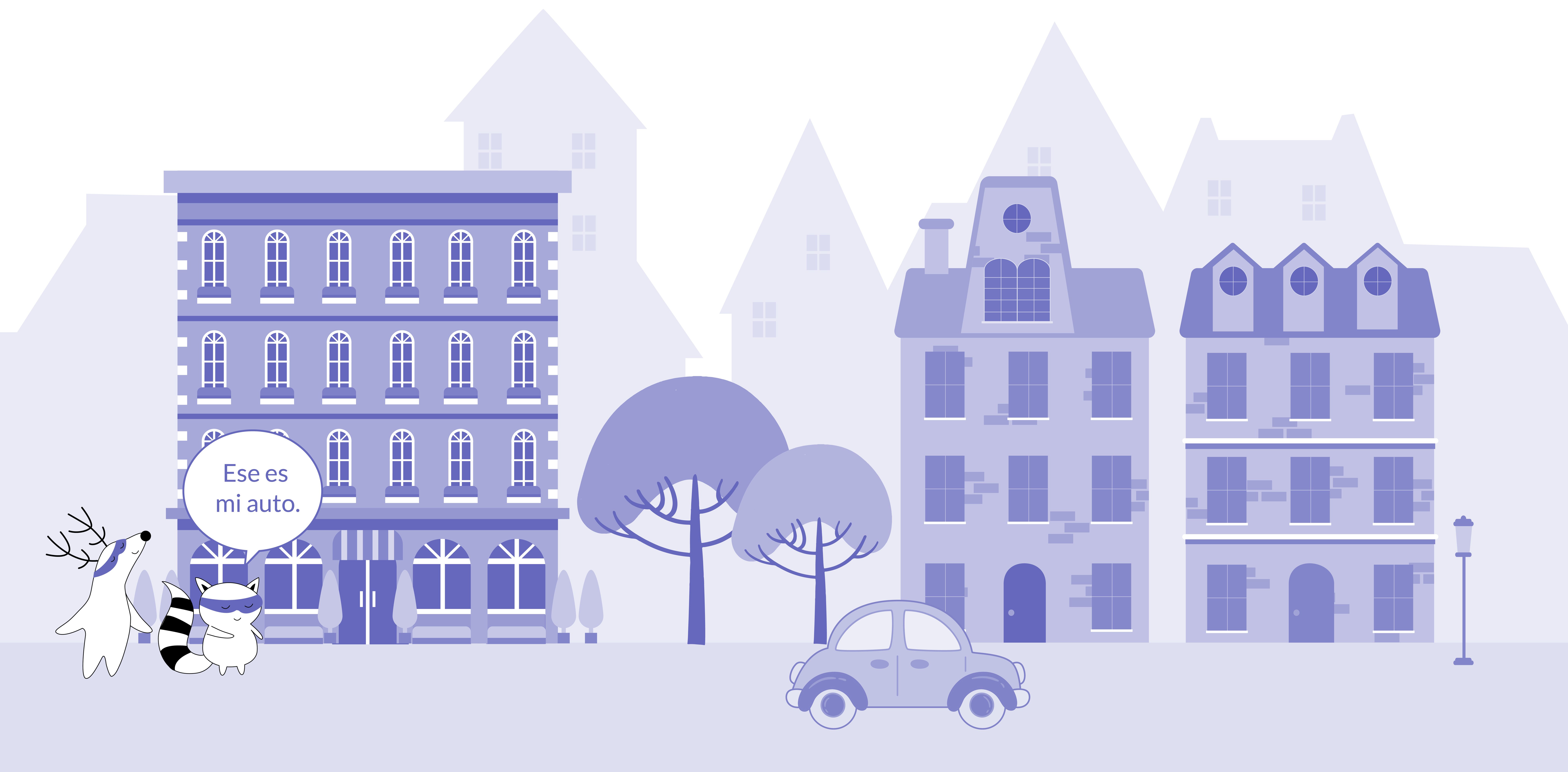
Are you struggling to improve your Spanish skills? Do you find studying new vocabulary, verbs, and grammar rules tedious? Fortunately, there are lots of ways to improve your Spanish skills while still having fun, and it might even make learning more effective!
So, whether you are a beginner or an intermediate learner, read on to discover the best Spanish learning tips!
Learn Spanish with Langster
Start With the Basics
This may sound obvious, but learning Spanish grammar rules, vocabulary, and pronunciation is essential at the beginning. These three areas are the building blocks of your language journey and will provide you with a solid foundation for further learning.
Why Learn Grammar
Some people may find Spanish grammar rules boring and difficult, but they are crucial to learn because they dictate how sentences are structured. Without them, you won't be able to construct a sentence that actually makes sense to native Spanish speakers.
When learning Spanish grammar, it's important to start with the basics, such as verb conjugation, noun gender, and sentence structure. As you progress, you can move on to more advanced grammar concepts.
Why Learn Vocabulary
Vocabulary is also crucial: it wouldn't be possible to communicate without words to say, right? But, if you're an absolute beginner, it can be overwhelming to know exactly what type of vocabulary to learn first.

You can start with simple, everyday words such as greetings, family members, food, and clothing. Don't forget to practice and review vocabulary regularly to help retain the words you've learned.
Why Learn Pronunciation
Pronunciation is also an important aspect to focus on when learning Spanish. English and Spanish have different sounds and intonation patterns, so it's important to learn how to produce the correct sounds in order to be understood by native speakers.
You can use resources such as online pronunciation guides, language learning apps, or a tutor to help you with your pronunciation.
Listen to Spanish
And let's not forget about your receptive and productive skills. In fact, listening can be one of the toughest abilities to acquire, particularly due to the many accents that exist in the Spanish language.
Luckily, you can use several resources to improve, such as music, podcasts, and audiobooks, that will help you get used to the sound and rhythm of the language. By regularly listening to native Spanish speakers, you will start to pick up on the nuances.

Listening to Spanish music can also help you expand your vocabulary and improve your grammar skills. You will come across new words and phrases that you may not have encountered before and understand how to use them in context.
Instead of just using traditional language learning methods, such as textbooks or grammar exercises, listening to real-life materials can be a fun and engaging way to learn Spanish. By choosing content that interests you, you will be more motivated to continue learning and practicing your skills.
Listening to Spanish content can also help you to gain exposure to Spanish culture. Music, podcasts, and audiobooks can offer a window into Spanish-speaking countries' history, way of life, and colloquialisms.
This can be a valuable addition to your language learning journey, as it can help you to understand the language in context and appreciate its amazing culture.
Great Songs to Learn the Spanish Language
- La Bamba, by Gypsy Kings. This classic song is easy to sing along with and features simple vocabulary and verb conjugations.
- Bailando, by Enrique Iglesias. It has a mix of Spanish and English lyrics, making it easier to understand without a dictionary.
- Despacito, by Luis Fonsi ft. Daddy Yankee. Who doesn't know this catchy, very popular song? It has slow and easy-to-follow lyrics, making it perfect for beginners.
- Oye Como Va, by Santana. With a recognizable melody and simple lyrics, this song is easy to learn and sing along with, so you'll practice pronunciation together with listening.
- La Camisa Negra, by Juanes. If you like romantic, upbeat songs, then you'll love La Camisa Negra, as it's very simple and easy to remember.
Useful Podcasts for Learning Spanish:
- "Coffee Break Spanish" offers daily Spanish lessons and covers grammar, vocabulary, and pronunciation.
- "Notes in Spanish" is designed for beginners and covers a range of topics, including culture and travel.
- "News in Slow Spanish" features news stories read in slow Spanish, making it easy for anyone to follow along.
- "Español Automático" has been crafted for Spanish learners who want to improve their listening and comprehension skills.
- "Duolingo Spanish Podcast" tells the stories of real native Spanish speakers, making the episodes engaging and a great way to practice listening and comprehension skills.
Spanish TV Shows and Movies
Watching TV shows and movies in Spanish with English subtitles can also be a very effective way to learn new vocabulary and understand how the language is used in context. Here are some reasons why:
- By watching characters interact in different scenarios, you can learn how to use the language in everyday situations, such as ordering food, having a conversation, or asking for directions.
- You will be exposed to new vocabulary and phrases that you may not encounter in traditional language learning methods.
- You can pause the show or movie to write down new words and phrases that you come across and then look them up in a dictionary or online to understand their meaning.
- Watching TV shows and movies in Spanish can also help you improve your pronunciation and listening skills.
Good Spanish-Speaking Shows and Movies to Watch
Looking for great suggestions of Spanish-speaking films to watch when learning Spanish? Here are our top picks:
"La Casa de Papel" (Money Heist)
This popular Netflix series follows a group of robbers who plan to pull off the biggest heist in history.
The show is set in Spain, so viewers can learn Spanish while getting a glimpse of Spanish culture and society and getting exposed to accents of different parts of this beautiful country. For example, the main character Tokyo is a native speaker from the region of Catalunya.
"Narcos"
Another great Spanish-speaking series, Narcos follows the story of the Medellín drug cartel in Colombia during the late 20th century.
The show is partly in Spanish and partly in English, making it accessible for English speakers who are just beginning to learn Spanish.
"Y tu mamá también"
This coming-of-age film from Mexico tells the story of two teenage boys who embark on a road trip with an older woman.
The movie is well-regarded for its honest portrayal of Mexican culture and society, and it offers a great opportunity to learn Mexican Spanish while having fun.
"Instructions Not Included" (No se aceptan devoluciones) -
Instructions Not Included is a Mexican comedy-drama about a single father who raises his daughter alone after her mother abandons her.
If you like this genre, you'll surely enjoy this excellent film as it's a fun and engaging way to learn Spanish while enjoying a heartwarming story.
"El Internado"
And, if you enjoy Spanish shows, then El Internado will be to your taste. This is a TV series that follows a group of students who attend a boarding school where strange things start to happen.
The show is a mix of mystery, thriller, and drama, making it a great choice for viewers who like suspenseful storylines.
Practice Speaking
Finding a Spanish-speaking partner or tutor can be an excellent way to practice your speaking skills and improve your overall proficiency in the language. Here are some reasons why.
First, speaking with a native Spanish speaker is the most effective way to practice your oral skills. It will allow you to learn new vocabulary, improve your pronunciation and grammar, and gain confidence while having real interaction.
Also, a Spanish-speaking partner or tutor can give you feedback on your skills and correct your mistakes, improving your overall accuracy and fluency.
And, let's not forget that this is a great way to learn about Spanish-speaking culture and customs, as you can learn first-hand about popular music, TV shows, and movies and better understand the cultural nuances of the language.
Immerse Yourself in the Language
Immersing yourself in your target language is one of the best ways to learn. For instance, you can visit Spanish-speaking countries and enjoy the wonderful Mexican beaches.
Make an effort to talk to native speakers: strike up conversations with locals at cafes, restaurants, or shops to get more practice.
Practice From Home
Even if you're not in a Spanish-speaking country, you can still immerse yourself in the language by watching TV shows and movies in Spanish or practicing with a language partner online. This will help you to get used to the sound of the language and the rhythm of natives’ speech.
Another way to immerse yourself in the language is by listening to Spanish music. Look for the lyrics, try to understand new words, and sing along to practice your pronunciation! The more you practice, the more confident you'll become.
Use Flashcards
If you're a visual learner, then flashcards will be your best friend when taking a traditional or online Spanish course. These are great tools for memorizing new vocabulary, grammar rules, and even verb conjugations.

Whether you make them yourself or use a ready-made deck, flashcards allow you to review the same information multiple times, which helps reinforce your memory without getting bored.
Also, these materials require an active engagement on your part, meaning you'll learn more efficiently than by using passive methods like reading or listening. By actively recalling the information on the flashcards, you're more likely to remember it in the long term.
As flashcards are easy to carry around, they are a convenient study tool for on-the-go learning. You can use them during your commute, while waiting in line, or during any other downtime you want to take advantage of.
Use Language Learning Apps
Using language learning apps like Duolingo, Babbel, or Langster can be a helpful way to supplement your Spanish learning and practice your skills on the go. You can simply download the app on your smartphone or tablet, and practice your Spanish skills whenever and wherever you have free time.
This convenience means that you can take advantage of small pockets of time, such as waiting in line or commuting, to practice your language skills.
Also, using an app does not mean learning without a plan. Most language learning apps offer a structured learning experience, especially for beginners. The lessons build upon each other, gradually increasing in difficulty as you progress.
With the help of interactive exercises, such as fill-in-the-blank, matching, or even speaking activities, you'll practice your vocabulary, grammar, and Spanish pronunciation skills in a fun and engaging way.
The Bottom Line

Learning a new language can be a challenging and time-consuming process, and it's important to be patient with yourself and stay motivated throughout the journey. You'll be developing new skills and using them in real-life situations; progress can take time.
Celebrate small victories, and set aside time each day or week to study and practice your language skills with engaging resources and language apps like Langster. By making language learning a regular habit, you can build on your progress over time and see steady improvement.
Remember, language learning is a journey, and by staying patient and consistent, you'll be able to achieve all of your Spanish learning goals.









